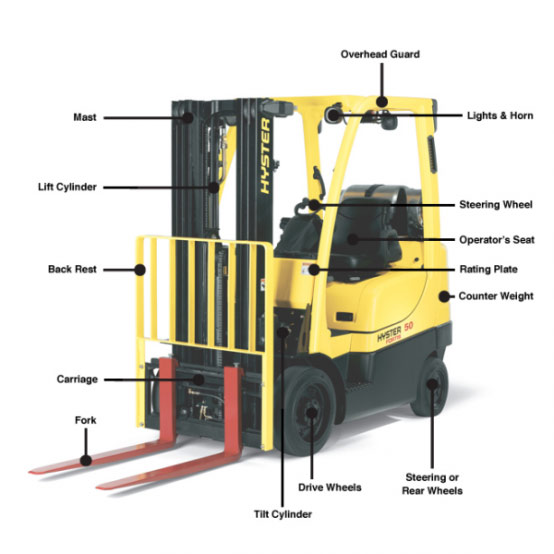Forklift Terminology Part 1: Introduction To Basic Forklift Features
Are you new to forklifts? Or just need a quick review?
This blog is the first instalment of a four part series that will focus on getting you familiar with basic forklift terminology or recap on basic forklift terms that you might already know.
Today we will begin with a short introduction to the basic features of a forklift. Familiarise yourself with the picture below labelled with the important forklift features and also find a small description of them. We will now run through them individually.

- Mast: The mast is the vertical support that permits raising and lowering the load.
- Carriage: A support structure where the forks are attached or mounted.
- Back Rest: Attached to the carriage and prevents the load shifting backwards, it protects the mast cylinders hoses as well as preventing any goods falling through the mast and hitting the operator.
- Fork (Tynes): The cantilevered arms attached to the load carriage, that engage the load.
- Lift Cylinder: Controls the amount by which the mast structure, forks and carriage may be raised or lowered in the vertical.
- Overhead Guard: A framework/roof, providing overhead protection for the operator from falling objects.
- Tilt Cylinder: Controls the amount by which the mast structure, forks and carriage may be tilted beyond the vertical position, forward or backward.
- Rating Plate: This is used to inform users of the maximum load a forklift can legally carry.
- Counter Weight: The weight installed by the manufacturer to give stability to the machine under load.
Part 2: Forklift Manoeuvrability.